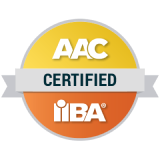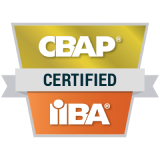Align, Optimize, And Excel With Professional Business Analysis Consulting
Optimize your project outcomes with targeted Business Analysis Consulting. Our services tackle strategic misalignment, process inefficiencies, and communication barriers, driving faster delivery and better results.
Certified Business Analysis Expertise


Proven Expertise
Tailored Business Analysis For Your Business Needs
Bridging Business Needs with Technical Execution
VOLO’s business analysis consulting services strategically align company objectives with technical capabilities to prevent project delays and reduce miscommunication.
By focusing on synchronization, these services provide a clear path to project success, avoiding the common pitfalls of misaligned project scopes and unclear goals.
Customized Training & Practical Workshops
Through interactive workshops, our business analysis services equip teams with critical skills to convert theoretical concepts into actionable tasks. These workshops prepare teams to tackle project challenges head-on, ensuring that all members can execute their roles effectively and meet project requirements.
End-to-End Requirements Lifecycle Management
VOLO’s business analysis consultants work to clearly define and communicate business objectives, improving collaboration across all stakeholders. This methodical approach ensures that projects remain aligned with business goals from start to finish, preventing scope creep and ensuring successful project outcomes.
Expert-Led Consulting & Industry Best Practices
Leveraging expertise in sectors like fintech, business analysis consultants provide teams with modern tools and strategic insights. This guidance helps teams navigate complex projects, solve critical issues, and meet market demands, leading to better project performance and outcome consistency.
Get Started With A Tailored
Discovery Package
VOLO offers Business Discovery Packages, each crafted to align with the specific scale and complexity of your project. These packages guarantee a comprehensive and targeted strategy, laying a solid foundation for success from the outset.
Light
- Business Requirements Document
- Business Analyst
Businesses with a high-level understanding of their needs but that do not have the resources to plan their product development.
Standard
- Business Requirements Document
- Prototype for 1 Flow
- Rough Project Estimation
- Product Requirements Document
- Business Analyst
- Technical Architect
- UI/UX Designer
Businesses that need a more detailed vision of what their project will look like.
Advanced
- Business Requirements Documents
- Proposal
- Software Requirements Specifications
- UI Style Guide
- Prototypes for all major flows
- Business Analyst
- Technical Architect
- UI/UX Designer
- Project Manager
- Quality Engineer
Businesses that need a comprehensive breakdown of a project and a clear plan for future development.
projects with ease.
BA Consulting Services As Part Of
The Software Development Lifecycle
Business analysis consulting is essential in full-cycle software development, overseeing everything from requirements to prototyping. This meticulous management ensures projects align precisely with client goals, reducing risks and tailoring solutions.
Read more
For clients needing augmented teams, tailored software project teams with Business Analysts ensure seamless integration. This strategic placement optimizes coherence between technical and business goals, driving targeted project success.
Read more
Business analysis consulting is essential in full-cycle software development, overseeing everything from requirements to prototyping. This meticulous management ensures projects align precisely with client goals, reducing risks and tailoring solutions.
Read more
For clients needing augmented teams, tailored software project teams with Business Analysts ensure seamless integration. This strategic placement optimizes coherence between technical and business goals, driving targeted project success.
Read more
Tailored Action &
Execution Process

Business Discovery
Initiate by engaging stakeholders to pinpoint the business’s current state and objectives. Key activities include:
- Clarifying business objectives.
- Identifying stakeholders for comprehensive insights.
- Setting clear project goals.
Implementation
This phase ensures all team members are aligned with the project's goals through:
- Defining and documenting detailed requirements.
- Supporting the development process to align outputs.
- Verifying requirements to ensure they meet business objectives.
Closure
Conclude by evaluating the project's success against the business objectives and requirements, resulting in:
- A detailed knowledge base including strategy, action plans, and risk assessments.
- User guides and instructions for seamless operation and adoption.

Discover Our Client Transformation Stories
Our business analysis consulting has significantly improved operations for companies such as Finance in Motion, ProCredit, and Quipu by streamlining their business analysis processes and enhancing project efficiency.
Our BA Toolset
Industries We Serve
VOLO’s business analysis consulting services cater to a diverse range of clients:
Financial Institutions & Fintech Companies
Support for complex software projects, helping navigate the intricacies of technology and finance.
Enterprise IT Teams & Software Development Firms
Assistance in scaling business analysis processes to meet growing demands.
Startups & Growing Businesses
Expertise in refining MVPs and product strategies to align with market needs.
Project Managers & Product Owners
Solutions to enhance business analysis workflows and increase project efficiency.





